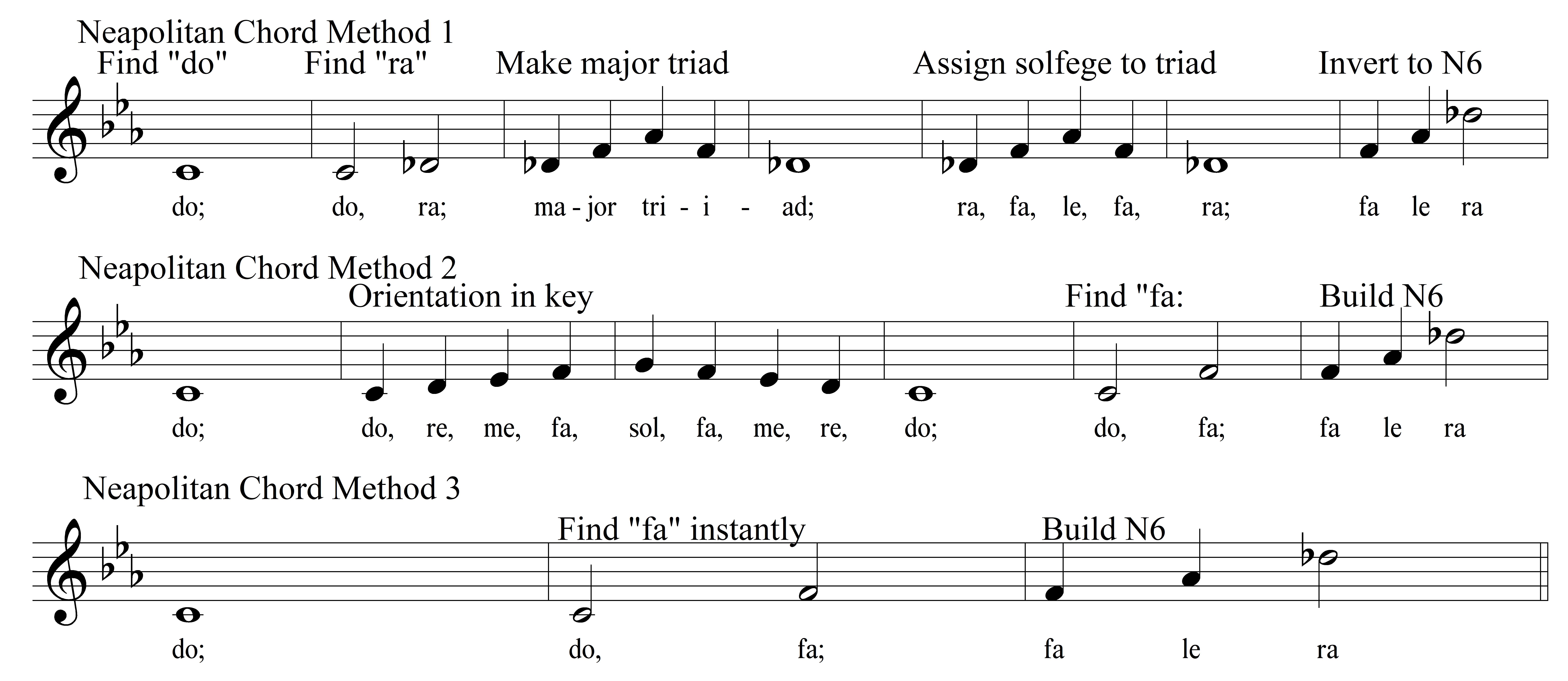Integrated Aural Skills 2018-19
Please note: this is an archived version of the textbook. Visit IntMus for up to date content!
Introduction to the Neapolitan Chord
The Theory of the Neapolitan Chord
- The Neapolitan chord, also known as the Neapolitan Sixth because it almost always appears in first inversion, describes a major triad whose root is the lowered supertonic. The solfege syllables of the chord are ra, fa, and le. However, since it appears in first inversion, we usually describe the solfege of the Neapolitan chord as fa-le-ra.
- Therefore, if you suspect you have heard a Neapolitan chord in a harmonic dictation, listen out for fa in the bass.
- It is acceptable to spell the chord analysis as N6 or as ♭II6.
- Function: the Neapolitan chord precedes the dominant, often substituting for IV, iv, ii6, or ii06. It most commonly appears in minor keys, though it is possible for it to appear in major keys also.
In Context – Harmonic Dictation

- Notice fa in the bass, plus the telltale ra in the soprano voice. That’s how we know this isn’t chord iv or ii06.
- For voice-leading reasons, it’s quite common for i6/4 to come between the Neapolitan chord and the dominant. (You’ll recall that i6/4 has dominant function.) In the following example, adding i6/4 between the Neapolitan chord and V7 means the soprano doesn’t have to sing ra-ti, which many singers find awkward.

- For voice-leading reasons, it’s quite common for i6/4 to come between the Neapolitan chord and the dominant. (You’ll remember that i6/4 has dominant function too.)
In Context – Singing
- Please practice singing the following exercise in a variety of key signatures until you feel comfortable building a Neapolitan chord from any given tonic.
- You will be asked in your final audit to build a Neapolitan chord, so take steps to become adept at this now.
